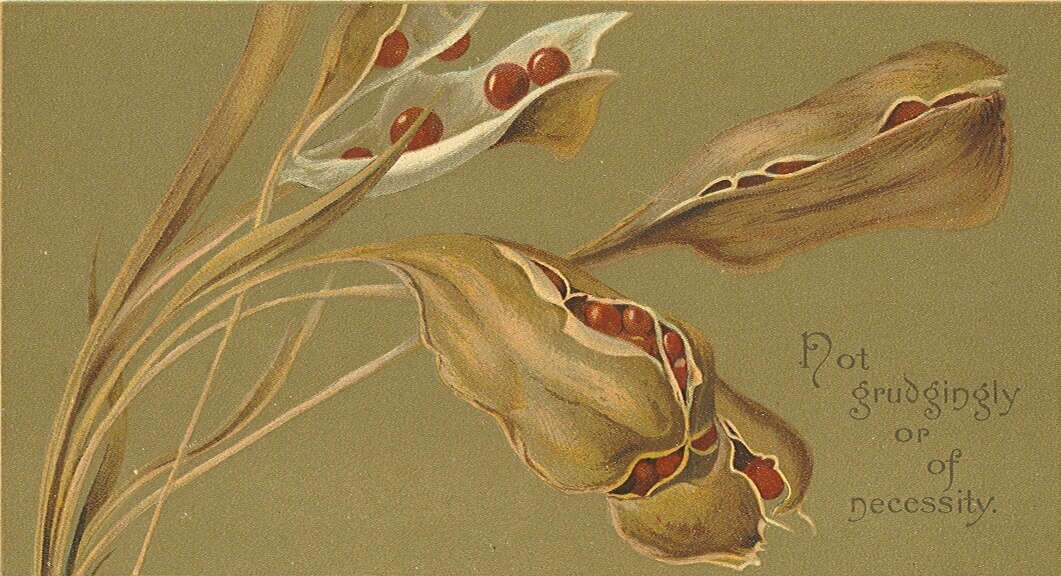Miriam Rockness is an author and historian who has devoted many years to the study of Lilias Trotter’s life, art, and faith. Below is a blog Miriam wrote in 2013 about Lilias’ poignant “Lesson of the Buttercup.” You’ll find in the reflections below how the happenings of a simple flower can evoke powerful insights into spiritual truths about our Creator that hold great significance for us and our own lives of faith. Images and text used with permission.
Lilias calls attention to three stages of the buttercup’s life: the bud with petals tightly clasped in the calyx; the young flower, loosening somewhat in the daytime, while retaining the power of contracting its petals; an open flower, petals folded back, golden crown, beyond the power of closing.

Have we learned the buttercup’s lesson yet? Are our hands off the very blossom of our life? Are all things – even the treasures that He has sanctified – held loosely, ready to be parted with, without a struggle, when He asks for them?”
–Lilias Trotter, Parables of the Cross
Then, noting the central flower pictured above – wide open; fully exposed – she raises the question: “Have we learned the buttercup’s lesson?”
The lesson, she goes on to state, is one of total abandonment to God, like the open flower, ready to release all things when asked to do so: “Are all things – even the treasures that He has sanctified – held loosely, ready to be parted with, without a struggle, when He asks for them?”
Abandonment to self. Full surrender. These phrases capture a concept which, frankly, runs counter to our culture’s most cherished beliefs: Autonomy. Independence. Self-determination. Personal identity. These concepts – and many more along these same lines – are not only highly esteemed values of our western society but, for that matter, our human nature. “Mine” and “me” are included in the short list of the earliest words of a toddler’s vocabulary
But what if. . . what if abandonment – “letting go” – is release to something, or Someone, better? If I truly believed that to be the case, would it make any difference?
Was it worth it?
Throughout the many years researching the life and works of Lilias Trotter, I was dogged by a question: “Was it worth it?” Did she really need to give up – “let go” – of a career in art that potentially could have ranked her among the great artists of her day? Isn’t it possible that she could have reached more people for Jesus through her great gift (and potential fame) than she did in the relative obscurity of North Africa, around people who did not recognize her immense talent, for whom her art had little or no currency?
It was that very question that I was forced to answer in the home of her grand-nephew many decades after her death. Gracious hosts, Robin and Claire shared their home, their hospitality and showed us various Trotter artifacts that had come their way as family historians. At the end of our visit, Claire looked me in the eyes, and echoed my question: “Why? Was it worth it, really? She gave so much for so little return.”
I breathed up a silent prayer and drawing from all I knew about Lilias – her life, her call – admitted, first, to empathizing with her questions. Then I went on to observe the high regard we give people in other professions – artist, athlete, musician by way of example – who sacrifice everything for the development of their discipline . How we recognize – admire – their singleness of purpose. We call it “passion.” Yet, when the same devotion is given to world of the spirit – faith – we call it “fanaticism.” Lilias, I noted, was fueled by her love for a particular people: their lot on earth; their destination eternally. If we believed the stakes to be eternal, as did Lilias, could we not acknowledge the nobility of her mission?
The Lesson of the Buttercup
I know that Lilias’ “lesson of the buttercup” was born of personal experience – a lesson fully embraced. Even as she beautifully illustrated the process by which one attains to this level of detachment I recognized how she, personally, had come to that level of total abandonment where it was no longer sacrifice, but joy, to be set free to follow her Master’s purposes – whatever/wherever that might be. Many of us remain in that transitional state, opening our petals for a while, but retaining our power to contract them.
The Lesson of the Buttercup – Lilias’s lesson – is a gentle one. It is a gradual movement from tight control, to conditional release, to full abandonment. It is, at core, a lesson of trust. It is the belief that our Creator, the One who gave us all that is good in our lives, knows better how to use those “gifts” for His higher purposes and for our highest good. It is less a matter of what we give up and more a matter to Whom we release it.
C. S. Lewis puts it this way:
“The principle runs through all life from top to bottom. Give up yourself, and you will find your real self. Lose your life and you will save it. Submit to death, death of your ambitions and favourite wishes every day and death of your whole body in the end: submit with every fibre of your being, and you will find eternal life. Keep back nothing. Nothing that you have not given away will be really yours. Nothing in you that has not died will ever be raised from the dead. Look for yourself, and you will find in the long run only hatred, loneliness, despair, rage, ruin and decay. But look for Christ and you will find Him, and with Him everything else thrown in.”
—Mere Christianity
Lilias learned the “lesson of the buttercup” early on. She looked back, decades later, and rejoiced at the wonderful life God had given her. I don’t know fully what the “lesson of the buttercup” means for me in the large. It certainly has not required, to date, anything close to radical, as with Lilias. But I do have a fairly good idea what it means for me today: to entrust my life, and all the people, places, plans, things that define it, fully into God’s loving and trust-worthy care.
“He is no fool who gives what he can’t keep to gain what he cannot lose.”
—Jim Elliot
Further Reflections from Lilias Trotter

See in these wild iris-pods how the last tiny threads must be broken, and with that loosing, all that they have is free for God’s use in His world around. All reluctance, all calculating, all ‘holding in’ is gone; the husks are opened wide, the seeds can shed themselves unhindered.
—Lilias Trotter, Parables of the Cross

“Oh, the desert is lovely in its restfulness. The great brooding stillness over and through everything is so full of God. One does not wonder that He used to take His people out into the wilderness to teach them.”
—Lilias Trotter, Diary 6 March 1895

All that outworking of His Grace has come so silently – “not with observation” – like His work in all growth around – so that one can hardly tell when or how the expansion has come.
—Lilias Trotter (On the anniversary of first setting foot in Africa) 9 March, 1888
 Many Beautiful Things: The Life and Vision of Lilias Trotter
Many Beautiful Things: The Life and Vision of Lilias Trotter
Discover the untold story of missionary Lilias Trotter, how she became a one of the world’s greatest women artists, and why her name was nearly lost to history.
Set against the backdrop of Victorian England, Many Beautiful Things introduces viewers to Lilias Trotter, a trailblazing artist and devoted follower of Christ who defied all expectations. In an era when women were often dismissed as incapable of creating high art, England’s foremost art critic, John Ruskin, declared that Lilias’s work could achieve immortality. Yet, as her artistic future hung in the balance, Lilias made a life-altering decision to follow the Lord’s calling on her life to become a missionary in North Africa.
Featuring the voices of Michelle Dockery (Downton Abbey) and John Rhys-Davies (Lord of the Rings, Indiana Jones), this film highlights Lilias’ faith and talent as she makes her remarkable journey to French Algeria in the late 1800s, where she encountered transcendent beauty and dedicated herself to pioneering missionary work among women and children.

